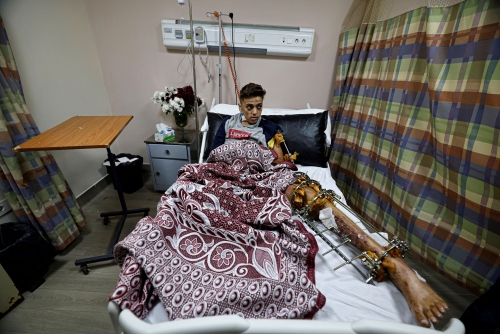UN says ‘not possible’ to create ‘safe zones’
AFP | Ganava
The Daily Tribune – www.newsofbahrain.com
The United Nations warned yesterday that it was impossible to create so-called safe zones for civilians to flee to inside the Gaza Strip amid Israel’s bombing campaign. Israel had initially focused its offensive on the north of the territory, but the army has now also dropped leaflets on parts of the south, telling Palestinian civilians there to flee to other areas.
“The so-called safe zones... are not scientific, they are not rational, they are not possible, and I think the authorities are aware of this,” James Elder, spokesman for the UN children’s agency UNICEF, told reporters in Geneva via video-link from Cairo.
His comments came as Israeli troops battled Hamas in the southern Gaza Strip after expanding their offensive deeper into the besieged area. As Israel’s offensive pushes deeper into Gaza, international aid organisations have warned that civilians in the densely-populated territory are running out of places to flee to.
Elder insisted that the safe zones declared by Israel “cannot be safe nor humanitarian when unilaterally declared”. The pretence that there is somewhere safe for people to flee to is “callous”, he said. He stressed that in a proper safe zone, “you can guarantee the conditions of food, water, medicine and shelter”.
Elder, who spent the past week or so in Gaza, stressed that none of that is assured in the areas designated as safe zones. “These are entirely, entirely absent. You cannot overstate this. These are tiny patches of barren land, or they are street corners, they are sidewalks,” he said.
“There is no water, no facilities, no shelter from the cold and the rain (and) there’s no sanitation.” Elder pointed out that in the overcrowded shelters that most of the displaced in Gaza have flocked to there had been around one toilet for every 400 people.
“Now remove those people and put them in... the so called safe places. It’s tens of thousands of people without a single toilet -- not one -- no clean water, nothing to drink,” he said. “Without water, without sanitation, without shelter the so called safe zones risks becoming zones of disease.
Related Posts

